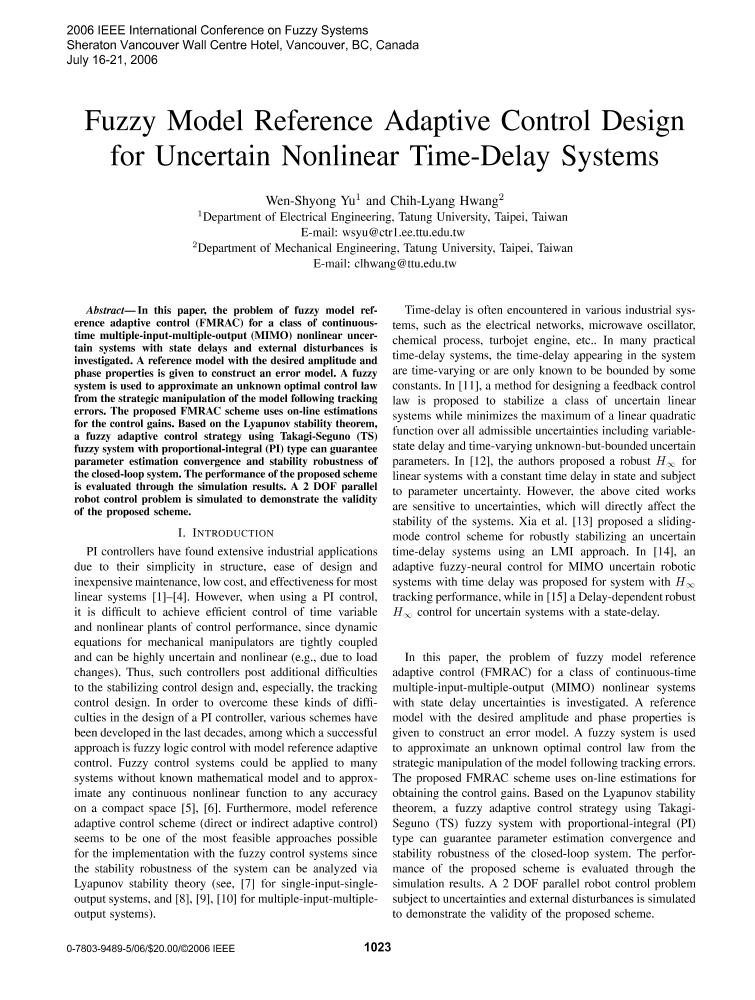I. Introduction
PI controllers have found extensive industrial applications due to their simplicity in structure, ease of design and inexpensive maintenance, low cost, and effectiveness for most linear systems [1]–[4]. However, when using a PI control, it is difficult to achieve efficient control of time variable and nonlinear plants of control performance, since dynamic equations for mechanical manipulators are tightly coupled and can be highly uncertain and nonlinear (e.g., due to load changes). Thus, such controllers post additional difficulties to the stabilizing control design and, especially, the tracking control design. In order to overcome these kinds of difficulties in the design of a PI controller, various schemes have been developed in the last decades, among which a successful approach is fuzzy logic control with model reference adaptive control. Fuzzy control systems could be applied to many systems without known mathematical model and to approximate any continuous nonlinear function to any accuracy on a compact space [5], [6]. Furthermore, model reference adaptive control scheme (direct or indirect adaptive control) seems to be one of the most feasible approaches possible for the implementation with the fuzzy control systems since the stability robustness of the system can be analyzed via Lyapunov stability theory (see, [7] for single-input-single-output systems, and [8], [9], [10] for multiple-input-multiple-output systems).




